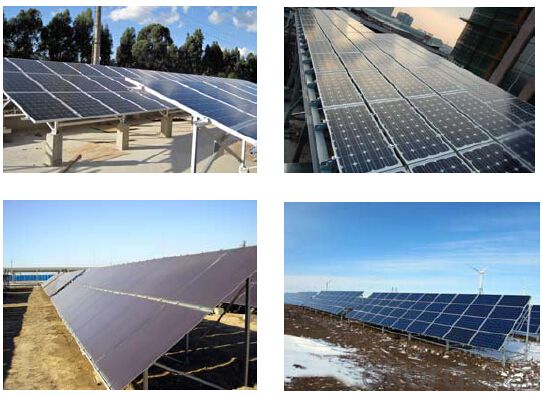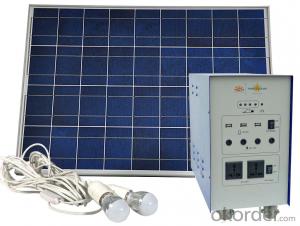Solar Energy Systems Phoenix Az - Off Grid Solar Power System PR-SAS300B with Battery Tank 300W
- Loading Port:
- Tianjin
- Payment Terms:
- TT OR LC
- Min Order Qty:
- 10 pc
- Supply Capability:
- 10000 pc/month
OKorder Service Pledge
OKorder Financial Service
You Might Also Like
Specification
Specifications
1.Supply 2 work modes: to save electricity bill or to supply long time power backup.
2. Supply battery tank,high integrated.
Warranty
provides a 1~3 year limited warranty (“Warranty”) against defects in materials and workmanship for its Uninterruptible power supply, Power inverter/chargers, Solar charge controllers, Battery Products (“Product”).
The term of this Warranty begins on the Product(s) initial purchase date, or the date of receipt of the Product(s) by the end user, whichever is later. This must be indicated on the invoice, bill of sale, and/or warranty registration card submitted to us. This Warranty applies to the original MUST-Solar Product purchaser, and is transferable only if the Product remains installed in the original use location.


FAQ
1. How fast will my system respond to a power outage?
Our solar inverters typically transfer to battery power in less than 16 milliseconds (less than 1/50th of a second).
2. What kind of batteries do the systems include?
Our solar backup electric systems use special high-quality electric storage batteries.
3. How do I install my system?
A solar backup inverter is connected to a home electric system , we will supply detailed installation manual and videos for our customers .




- Q: How do solar energy systems impact energy access in developing countries?
- Solar energy systems have a significant positive impact on energy access in developing countries. These systems provide a sustainable and reliable source of electricity, especially in regions with limited or no access to the traditional grid. By harnessing the abundant sunlight, solar energy systems help bridge the energy gap, bringing power to remote communities, schools, hospitals, and households. This not only improves the quality of life for individuals but also supports economic development, enhances educational opportunities, and enables access to essential services such as healthcare and communication. Additionally, solar energy systems reduce reliance on fossil fuels, mitigating environmental pollution and combating climate change. Overall, solar energy systems play a crucial role in expanding energy access, empowering communities, and fostering sustainable development in developing countries.
- Q: Can a solar energy system be installed on a tile roof?
- Yes, a solar energy system can be installed on a tile roof. In fact, tile roofs are one of the most common types of roofs where solar panels can be installed. Special mounting brackets are used to secure the panels onto the tiles without damaging them. The process requires careful installation techniques to ensure the integrity of both the roof and the solar system.
- Q: Can solar energy systems be used in powering banks or financial institutions?
- Yes, solar energy systems can definitely be used to power banks or financial institutions. In fact, many banks and financial institutions worldwide are adopting solar energy systems as a sustainable and cost-effective solution for their power needs. Solar energy systems consist of photovoltaic (PV) panels that convert sunlight into electricity. These panels can be installed on the rooftops or open spaces surrounding banks and financial institutions. The generated electricity can then be used to power various operations within these institutions, including lighting, air conditioning, computers, ATMs, and other electronic devices. There are several reasons why solar energy systems are advantageous for banks and financial institutions. Firstly, they provide a reliable and continuous source of electricity, reducing the dependence on the traditional power grid. This ensures uninterrupted operations and minimizes the risk of power outages, which is critical for financial institutions that need to maintain constant access to their systems. Furthermore, the use of solar energy helps banks and financial institutions reduce their carbon footprint and contribute to environmental sustainability. By utilizing renewable energy, they can significantly reduce greenhouse gas emissions and help combat climate change. This aligns with the increasing focus on corporate social responsibility and sustainable practices among businesses. Additionally, solar energy systems provide long-term cost benefits. While the initial installation cost may be higher compared to traditional energy sources, solar systems have low operating and maintenance costs. Over time, the savings on electricity bills can be substantial, allowing banks and financial institutions to allocate those funds towards other investments or initiatives. Moreover, the installation of solar panels can enhance the reputation and branding of banks and financial institutions. By visibly demonstrating their commitment to renewable energy, they can attract environmentally conscious customers and investors who value sustainable practices. In conclusion, solar energy systems are highly suitable for powering banks and financial institutions. They offer a reliable, sustainable, and cost-effective solution, allowing these institutions to meet their power needs while reducing their environmental impact and enhancing their reputation in the market.
- Q: Are there any limitations to the use of solar energy systems?
- Yes, there are limitations to the use of solar energy systems. Some common limitations include the intermittent nature of sunlight, which means solar power generation may be affected by weather conditions and variations in daylight hours. Additionally, the initial installation cost of solar systems can be expensive, although it is often offset by long-term savings. The efficiency of solar panels can also be affected by factors such as shading and dust accumulation. Finally, the storage and distribution of solar energy can be challenging, as it requires the use of batteries or connection to the grid.
- Q: Can solar energy systems be used in powering amusement arcades or gaming centers?
- Yes, solar energy systems can definitely be used to power amusement arcades or gaming centers. Solar energy systems convert sunlight into electricity, providing a clean and renewable source of power. By installing solar panels on the roofs of these facilities or in nearby areas with sufficient sunlight exposure, the generated electricity can be used to run the arcade machines, gaming consoles, lighting, air conditioning, and other electrical equipment within the establishment. In addition to reducing electricity bills, solar energy systems also have long-term cost savings and offer a sustainable solution that aligns with the growing demand for environmentally friendly operations.
- Q: Can solar energy systems be used for powering telecommunications towers or antennas?
- Yes, solar energy systems can be used for powering telecommunications towers or antennas. Solar panels can be installed to capture sunlight and convert it into electricity, which can then be used to power the towers or antennas. This helps in providing a sustainable and reliable source of power, especially in remote locations where it may be difficult or costly to connect to the grid. Additionally, solar energy systems can also reduce operating costs and minimize the environmental impact associated with traditional power sources.
- Q: How do solar energy systems impact the stability of the electricity grid?
- Solar energy systems can have both positive and negative impacts on the stability of the electricity grid. On one hand, solar energy systems can reduce strain on the grid by generating electricity during peak demand times, thus reducing the need for additional power sources and enhancing grid reliability. On the other hand, the intermittent nature of solar power can pose challenges to grid stability, as sudden fluctuations in solar generation can impact the balance between electricity supply and demand. However, with the integration of advanced technologies, such as energy storage systems and smart grid management, these challenges can be effectively mitigated, ensuring a stable and resilient electricity grid system.
- Q: What is the role of solar trackers in maximizing energy production?
- Solar trackers play a crucial role in maximizing energy production by continuously adjusting the position of solar panels to follow the sun's path throughout the day. This allows the panels to capture the maximum amount of sunlight, increasing the efficiency and output of the solar system.
- Q: How do solar energy systems impact the quality of indoor air?
- Solar energy systems have a positive impact on the quality of indoor air. Unlike fossil fuel-based power generation, solar energy does not emit harmful pollutants such as carbon dioxide, sulfur dioxide, or nitrogen oxides. By replacing traditional energy sources with solar power, we can significantly reduce air pollution and improve the air quality inside buildings, making them healthier and safer for occupants.
- Q: Can solar energy systems be used for powering telecommunications networks?
- Yes, solar energy systems can indeed be used for powering telecommunications networks. Solar power is a sustainable and renewable energy source that can be harnessed to generate electricity for various applications, including powering telecommunication infrastructure. Solar energy systems consist of solar panels that convert sunlight into electricity through the photovoltaic (PV) effect. These PV panels are typically installed on rooftops, ground-mounted arrays, or even integrated into the structure of telecommunication towers. They absorb sunlight during the day and convert it into direct current (DC) electricity. To utilize this electricity for powering telecommunications networks, an inverter is used to convert the DC electricity into alternating current (AC), which is the standard form of electricity used in most electronic devices. The AC electricity generated by solar panels can then be used to power telecommunication equipment such as base stations, antennas, transmitters, and receivers. The benefits of using solar energy systems for powering telecommunications networks are numerous. Firstly, solar energy is abundant and available in almost all geographical locations, making it a viable option for powering remote or off-grid telecommunication sites. This reduces the reliance on traditional grid electricity, which may not be available or reliable in certain areas. Secondly, solar power is environmentally friendly, emitting zero greenhouse gases during operation. By using solar energy, telecommunication networks can significantly reduce their carbon footprint and contribute to the global transition towards clean energy sources. Moreover, solar energy systems are low maintenance and have a long lifespan, providing a reliable and cost-effective solution for powering telecommunication infrastructure. Once installed, solar panels require minimal maintenance and can last for 25-30 years or even longer with proper care. In conclusion, solar energy systems can be effectively used for powering telecommunications networks. They offer a sustainable and reliable source of electricity, reduce environmental impact, and provide a cost-effective solution for remote or off-grid telecommunication sites. With the increasing focus on renewable energy, solar power is becoming an increasingly popular choice for powering various sectors, including telecommunications.
Send your message to us
Solar Energy Systems Phoenix Az - Off Grid Solar Power System PR-SAS300B with Battery Tank 300W
- Loading Port:
- Tianjin
- Payment Terms:
- TT OR LC
- Min Order Qty:
- 10 pc
- Supply Capability:
- 10000 pc/month
OKorder Service Pledge
OKorder Financial Service
Similar products
Hot products
Hot Searches
Related keywords






























